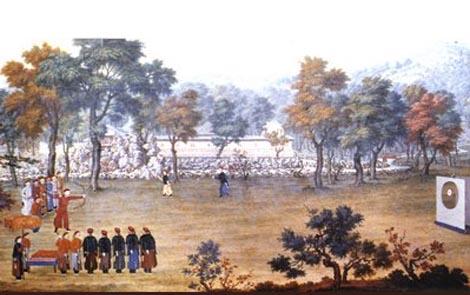Chinese Ritual Archery
Chinese Ritual archery was the product of the ritual-respecting thoughts and ritual systems of the Western Zhou Dynasty. As the archery had rigid rules on rituals and procedures, hence the name ritual archery. The participants should strictly follow the rules and rituals to show respect for the old and the senior.
The ritual archery could be classified into dashe (great archery), binshe (guest archery), yanshe (happy archery) and xiangshe (township archery) according to the ranks. Dashe was held when the emperor needed to select someone among vassals and court officials to attend sacrificial ceremony through archery; binshe was held as a ritual when the vassals came to visit the emperor or when vassals officially met together; yanshe was the entertaining archery held when the emperor and the court officials had a banquet; and xiangshe was regularly held in spring and autumn when local officials would select talents through archery.
The core of ritual archery was the archery match. Each time six archers would be selected who would be divided into three groups, two archers in each group. The match would have three rounds; one archer shot four arrows in each round. The first round was preliminary, and the archers in the three groups would show their skill in turn; in the second round, the host and guests would also join in, and the loser would be required to drink wine for punishment; the third round was the most difficult: music should be played during the round, and the archers should shoot the arrows according to the beats of the music.

You must be logged in to post a comment.